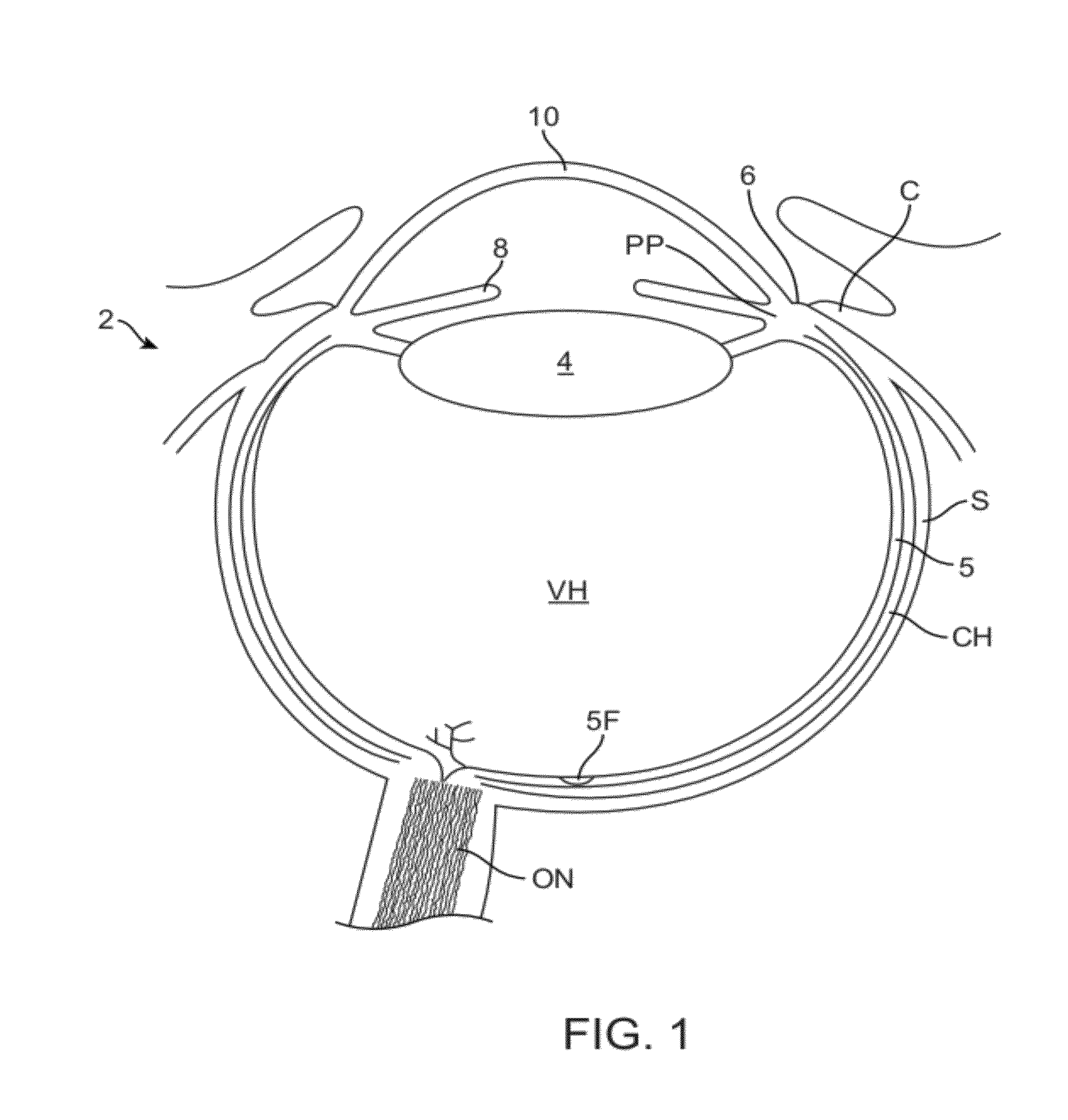Conformable Therapeutic Shield for Vision and Pain
a therapeutic shield and vision technology, applied in the field of visual rehabilitation and pain treatment, can solve the problems of degeneration of the image seen by a patient, excessive hydration of the cornea in eyes with epithelial defects, and deformation of the nerve fibers of the cornea, so as to improve the promote regeneration of the epithelium, and improve the effect of epithelium regeneration
- Summary
- Abstract
- Description
- Claims
- Application Information
AI Technical Summary
Benefits of technology
Problems solved by technology
Method used
Image
Examples
Embodiment Construction
[0300]Embodiments of the present invention as described herein can be combined with the therapeutic covering device for pain management and vision as described in U.S. patent application Ser. No. 12 / 384, 659, filed Apr. 6, 2009, entitled “Therapeutic Device for Pain Management and Vision”, the full disclosure of which is incorporated herein by reference and suitable for combination in accordance with some embodiments of the present invention as described herein.
[0301]The embodiments described herein can be used to treat eyes in many ways with a covering. Although specific reference is made to treating epithelial defects of the eye, the covering described herein can be used for long term vision correction with extended wear contact lenses that inhibit swelling of the cornea when the covering is positioned on the eye for an extended period.
[0302]The coverings as described herein can seal the cornea, so as to restore deturgescence of the cornea to decrease pain and improve vision. The ...
PUM
| Property | Measurement | Unit |
|---|---|---|
| diameter | aaaaa | aaaaa |
| pressure | aaaaa | aaaaa |
| pressure | aaaaa | aaaaa |
Abstract
Description
Claims
Application Information
 Login to View More
Login to View More - R&D
- Intellectual Property
- Life Sciences
- Materials
- Tech Scout
- Unparalleled Data Quality
- Higher Quality Content
- 60% Fewer Hallucinations
Browse by: Latest US Patents, China's latest patents, Technical Efficacy Thesaurus, Application Domain, Technology Topic, Popular Technical Reports.
© 2025 PatSnap. All rights reserved.Legal|Privacy policy|Modern Slavery Act Transparency Statement|Sitemap|About US| Contact US: help@patsnap.com



